What is the purpose of a business process?
Processes are everywhere. From large corporations to the military all rely on processes to get things done consistently. All successful craftspeople, professionals, managers, and sales people use a process—often without realizing it.
A skill is learned by following another person’s documented processes—whether it is on-the-job training, learning in class or self-taught by reading books and manuals.
For example, an apprentice watches a skilled carpenter proceed through the processes of carpentry work. The apprentice listens to the carpenter’s explanations and asks questions about the processes.

The apprentice then learns to read blueprints, develop math skills and operate tools. Each acquired skill involved understanding the processes that were being used.
What components does a process map have?
Processes have several components such as:
- Timing
- Costs
- Standards for product, performance, or employees
- Quality
- Skills
Timing is how long it takes to complete the sequence of steps. Costs may include raw materials, labor, management, or equipment. Standards are specifications; like how the end product will look, what special tools are needed, or how the workers should conduct themselves.
The quality component addresses issues like customer satisfaction and the product’s enhanced appearance/improved performance. The skills component might deal with defining the skill level needed by employees to complete the process successfully.
Successful business process mapping should take into account every step of your business and ensuring consistency in process flows documentation by providing you with an analysis of what needs improvement or tweaking.
Process manuals for each the core business functions including Marketing, Finance, Operations, Management and numerous sub-systems become the blueprint for every area of the business.
Who invented process mapping?
Business process mapping has a long history, dating back to the early 1920s. In 1921, industrial engineer Frank Bunker Gilbreth developed “Flow Process Diagram,” which is now known as ASME. Allan H Morgensen utilized these methods for his study of production processes at Procter & Gamble from 1945 until 1948.
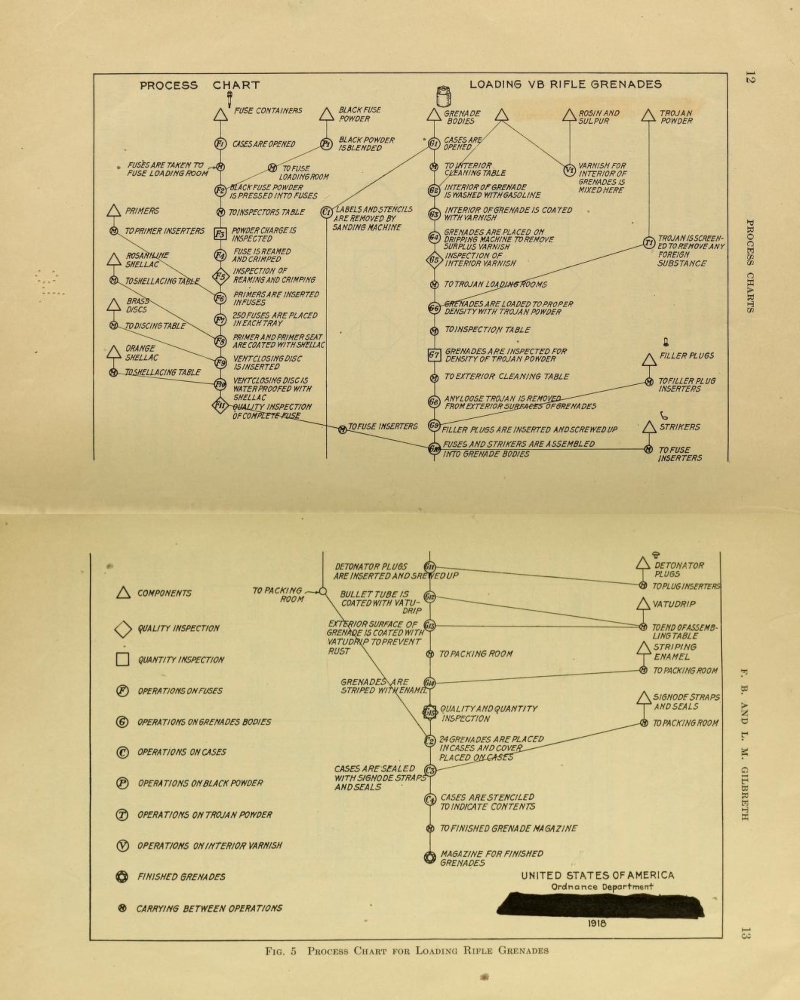
By 1947, ASME had implemented an icon system derived from Gilbreth’s original work, which they published in that year – allowing engineers to express ideas visually rather than verbally or through text documents alone.
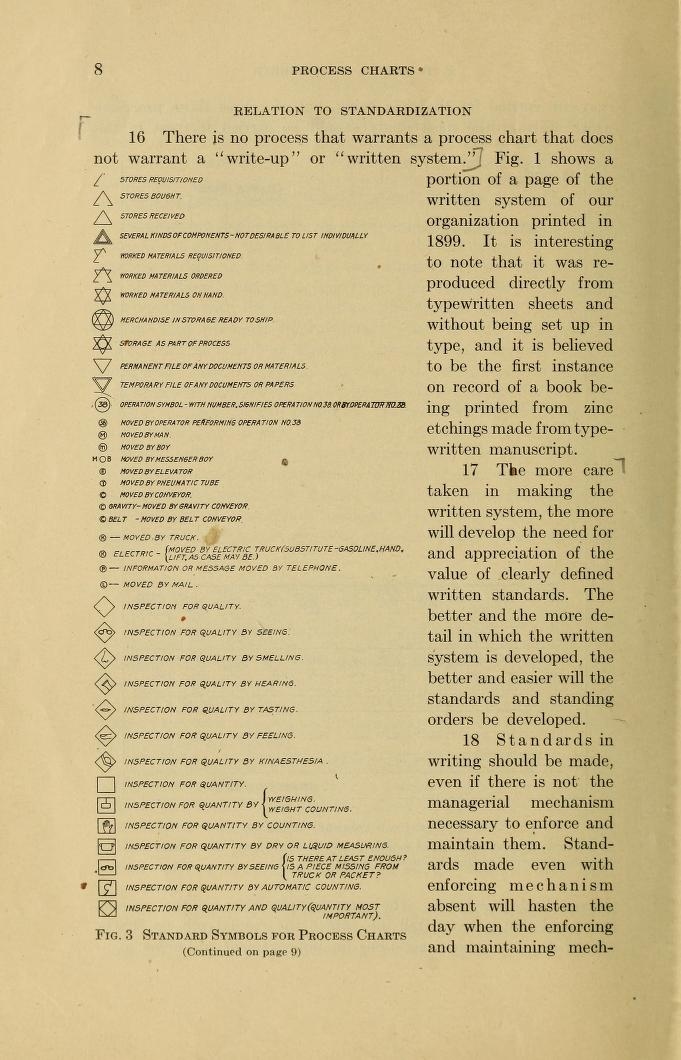
You can see Gilbreath’s original publication here.
What is business process management (BPM)?
Business process management or also referred to as BPM is a method of implementing, measuring, and facilitating various processes so that work flows as smoothly—and profitably—as possible.
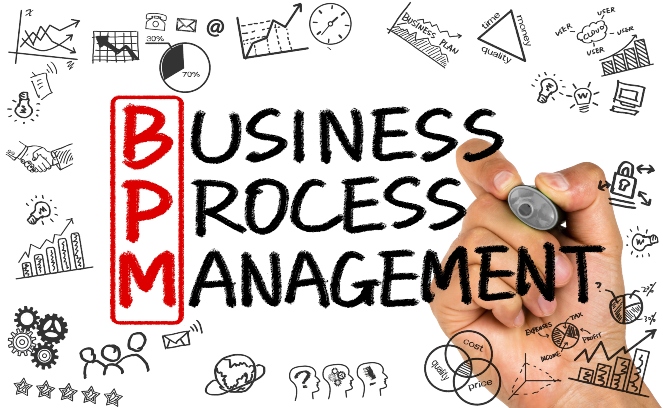
Most problems in a business system are caused by a lack of effective processes being implemented. A process is a step-by-step guide that produces a desired result. BPM provides a solution that allows companies to map out workflows from start to finish.
What is the process of mapping?
A process includes inputs that are transformed into outputs. From inputs to outputs, a process can be shown visually through a process map.
Understanding processes and improving them in an effort to reduce problems, defects, waste, etc. is an important component of Six Sigma methodology. In an organization, processes are assigned to a Process Owner who makes sure that inputs and steps are properly implemented.
A Process Owner must have enough authority to make decisions. This person also can be a team leader and is responsible for the outcome of processes within projects. A Process Owner reports to a Senior Manager.
In a process, feedback is critical to determine which steps in the process are not effective or efficient.
What is the purpose of process mapping?
Business process mapping is a way for businesses to organize and clearly see what they are doing, how, why it’s done that way. These maps can be used in many ways such as analyzing the performance of specific objectives or assessing current business processes against general goals.
Businesses often find these things valuable because understanding any area helps them better understand their overall operations which further leads to increased efficiency and productivity over time. We use process mapping to find the best way for a business to function.
Process maps are used by organizations and businesses in order to improve their success rate, growth levels or overall performance of tasks. A process map is an analysis done by examining what processes need improvement or tweaking, taking into account every step of your business so that you can be more successful.

Business process mapping is a way to see what you are doing, how it’s done and why it has been done that way in order to understand your business better. These maps can be used for many things – analyzing specific objectives or assessing current processes against goals.
We often find these tools valuable because understanding any area helps us better understand our overall operations which then leads to increased efficiency and productivity over time. Business process mapping helps you identify inefficiencies and opportunities for improvement.
By getting a better understanding of how your business operates, it becomes easier to pinpoint the problem areas that require attention or change.
Where do you find existing processes?
You already have the processes, you just don’t realize it yet. If you have a product or service, there is an existing business process. You just need to use your creativity and find the right way to diagram it out in order for others to see how it works. They are already in your mind!
 Processes are everywhere – they’re what makes up all of our workdays! Business process mapping outlines them so that we can better understand where a business can improve efficiency.
Processes are everywhere – they’re what makes up all of our workdays! Business process mapping outlines them so that we can better understand where a business can improve efficiency.
In order to get the most out of an interview, you must talk to all people involved in a business process. This enables you ask questions and find who understands what is going on so that they can point out any problems with it and help devise solutions for them.
You should always listen carefully because process participants will come into interviews with their own emotional feelings about how things work.
By creating process maps, a business owner is able uncover other information as well which might be helpful when looking at different aspects of your company’s problem-solving methods.
Who do you get involved with mapping processes?
Getting employee buy-in on a project is crucial and requires time spent explaining the benefits of business process to all of your participants. You want make sure you get people involved who are at ground level, doing daily tasks as well as senior management in order for nothing to be missed along the way.

All steps need to be identified so that all team members know exactly what they’re responsible for when working with this a particular project. It is critical to determine how long each step will take before taking them, recording more than one possible outcome or timeline per task, etc.
When you’re mapping core processes, your goal is to identify all of the steps that are involved in it. Business process should be mapped out so that they highlight discrepancies and areas for improvement. You shouldn’t stop the session until the entire process is mapped.
Warning! Process mapping can cause interdepartmental conflicts
Business process mapping is a valuable exercise for growing organizations that need to work on documenting and implementing systems, processes and hierarchy which allow them to scale.
However this is a socially aware exercise where you can’t overlook these issues either as they’re important if not managed correctly. If the business process isn’t dealt with properly then it will often result in conflict or create another situation entirely.

The purpose behind business process mapping opens people’s eyes to new ways of working – like listening more closely/being prepared for change when necessary too. Thinking through each step can show glaring gaps that you may not have seen before.
It will cause conflict if done poorly or unwisely because people might feel threatened by new ideas being introduced which could mean changes in the way things have worked previously.
But when managed well this business process opens up eyes of individuals who are willing to listen to these new perspectives with open mindsets about trying something different than what they’ve been doing before.
What are some types of business process maps?
There are many different types of business process maps that you could use. All come with pros and cons but all have their own merits to them too. Let’s take a look at some of the most common types of process maps.
1. The Basic Top-Down Process Flowchart
Creating a basic top-down process flowchart is important for engineers and software designers, who often use them to map out new projects. Basic top down business process flowcharts are especially useful if a project has steps that call for decisions or chronologically sequenced actions because it can be used as the blueprint of how these processes work.
Use process mapping to make decisions without worrying about the extended details that most people do not find necessary; quick visual guides ensure tasks are intuitive and easy to understand when communicating business practices across teams.
2. Data Flow Diagrams
Data flow diagrams illustrate data storage. Data flows from one place to another, passing through an array of processes that can be linked together with information found in the diagram.
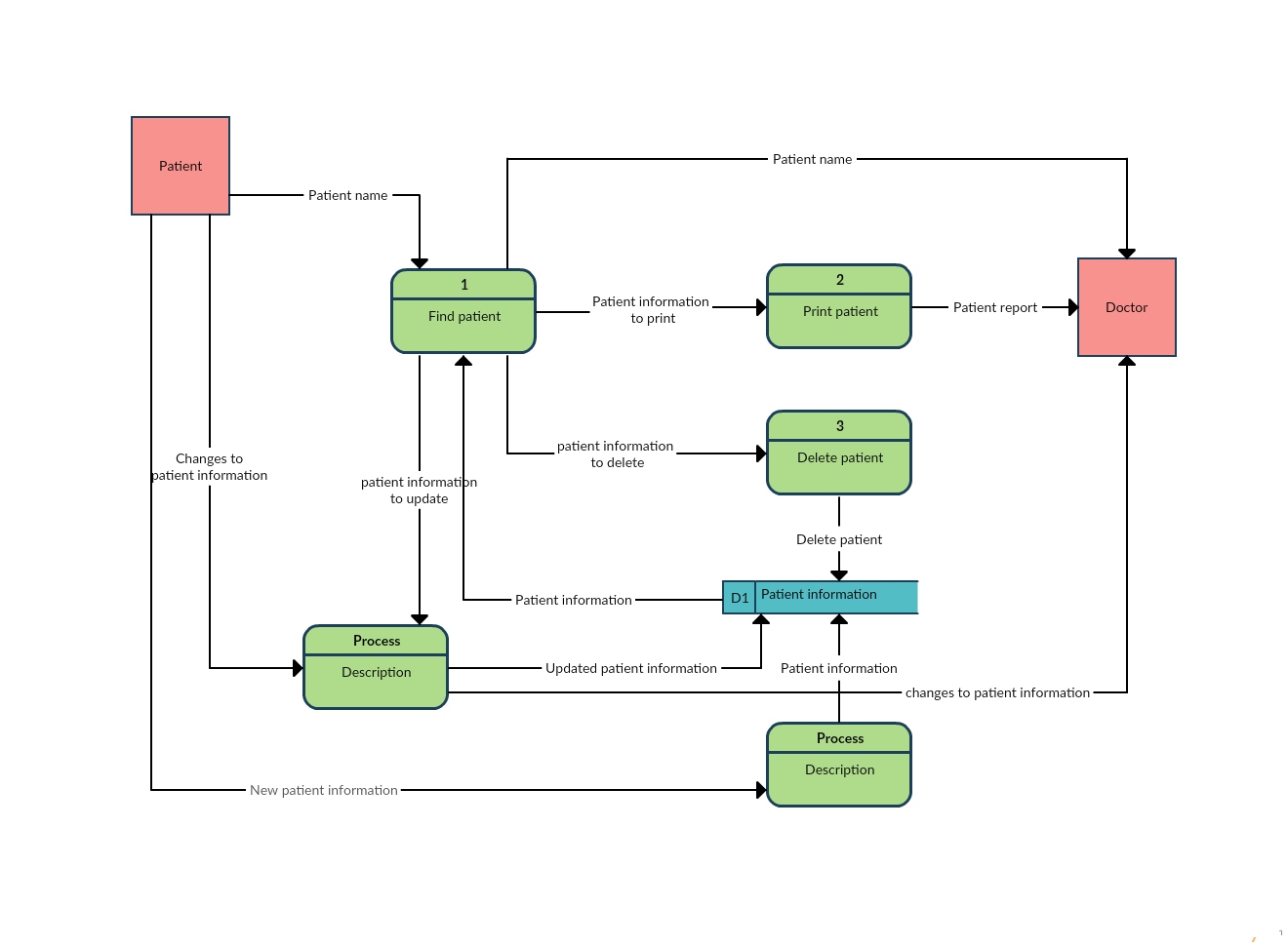
Creately
An application is to document analyzed procedures within a project file by portraying how they are interconnected and searchable thanks to their raw form being converted into documented analyses for quick access when needed.
3. Swimlane Flowchart
The swimlane flowchart is a simplified process map. It can be used to illustrate where each individual can start work thus avoiding ambiguous information that could lead to confusion and delay of the business process entirely.
In the context of this map, its function parallels those seen on generic variations; however what sets these types apart are their unique features. -the one being how they show elements like people’s input or data flows from different perspectives depending on whom you’re looking at through your lens (i.e., senior management).
4. Multi-Flow Process Chart
A sequence flow is most commonly done with a straight line and an arrow, but you can also do it as curved lines. An association (presented by a dotted line) connects data to tasks in your diagram.
Make sure the messages are not connecting any activities within that pool of circles or arrows because this will cause confusion for viewers who may think different pools represent other entities entirely!
Creately
Every process should have a goal and be documented with transparency so others could follow the same steps as planned out by those who are in charge of managing that specific area.
The reason for this is because processes cannot exist without being measured across all sectors; not just one particular industry
5. Value Stream Map
Value stream flowcharts are a simple yet powerful process mapping tool for diagramming the process by which information and supplies make their way to you, from supplier to consumer.
Conceptdraw.com
They can be used on computer software programs like Microsoft Excel or Google Slides that allow users of these platforms an opportunity analyze value streams in order to improve processes moving forward with future projects
The use of this invaluable technique is not limited merely as a means for designing new systems; it also helps companies design better policies through identification of any wasteful aspects within existing ones.
6. High-Level Flowchart
Business process maps are a type of flowchart that is used for determining the sequence and types of activities in an organization.
ResearchGate
There are two main categories:
- Bottom-up, which show how information flows through individual functions or departments.
- Top-down, which illustrate the most important parts at each stage such as sources to customers processes.
Top down process flow
The top-down approach focuses on the processes that are important to customers and is a way for business managers to make strategic plans about how they should improve their business operations.
Tech Differences
Bottom-up process flow
Bottom-up process mapping is a way to find problems within the organization. It can be used for diagnosis of those areas in which resources are misallocated, waste increases or where there are any other deficiencies.
The use of this invaluable technique is not limited merely as a means for designing new systems; it also helps companies design better policies through identification of any wasteful aspects within existing ones.
As you read through this article, it will help to keep in mind that business processes are not static but rather dynamic; they’re constantly changing because of technological advances or any other factor which can disrupt operations for a momentary time span.
7. A Detailed Flowchart
Here is a flowchart or process diagram that shows an intricate variation of a process. This implies the complete detail of each sub-process contained within this type of diagram.
A flowchart can be used if it’s vital to get every detail (inputs and outputs) related to a step in your process, whether decision points are involved or not…
ScienceDirect.com
While this example is pretty complication, flow charts can be used for any process. This example is presented to show you to not leave out any details. They are all important steps. This type of map can also document decision points such as those at which decisions need made on where data will go next based off its value.
These diagrams do require some time and thought ahead before creating ones so remember these simple rules when starting out!
8. The Deployment Flowchart
The deployment flowchart is an excellent way to document all of the steps that need to be completed in order for a procedure or process. The step-by-step documentation often helps to ensure consistency throughout the entire process, which can help make processes more efficient and effective as well.
Conceptdraw.com
This type of map has been used by organizations and business for years, as it provides stakeholders with information about how processes work so they can better understand them.
For example, managers may want their team members who are not always involved in day-to-day operations know what needs done when completing tasks such as social media posts or advertising campaigns.
So Why Bother With Business Process Maps?
There are best practices for mapping out workflows so they can be efficiently used. Simplifying the items on the list is important to make it easy for staff members to understand. The entire process overview should provide options for process improvement to be made more quickly, saving time and most importantly, money!
The business must revisit all business processes regularly because there may have been changes or additions since it was last looked at. By routinely reviewing established processes, you can identify how often certain tasks should take place and if anything has changed from what was originally planned before implementation. Let’s take a look at some of the benefits a business can glean once undertaken.
7 Business benefits of process mapping
1. Improves Problem Solving
The process of mapping management can be a powerful tool to help identify and solve problems. Not only does it provide one with the ability to see where things are going wrong, but also gives all people involved an understanding on how best practices should work so that mistakes don’t happen again in future projects.
It’s not just about identifying what caused this particular bottleneck; by looking at the entire process we’re able to improve both our current processes as well as set up better defenses against potential risks for legal or security issues down the line!

2. Monitoring Improvements
Continuous improvement is the key to success when it comes down to business processes. Whether you’re improving a process for the first time or revamping an old one, continuous monitoring and optimization will help your revised process continue on its path towards perfection as long as you are willing keep up with reporting progress from start-to-finish.
3. Visual Representation Of Roles
One of the best ways to understand what is happening during a process in an organization and who should do it, is through the use of business maps or Process Maps.
These are visual representations that outline each task for every person involved at different stages within a particular procedure. They show which tasks correspond with certain people and their roles when they’re managing one specific part of this map.
Business process mapping can help you identify where any delay points may be as well as provide more insight into how something might go wrong if there’s not enough staff available on hand to manage all aspects simultaneously (which happens quite often).
4. Improves Communication Inside and Outside Of Business
Business process mapping is the best way to communicate a business’s functions and policies. It also makes it easier for others in your company and outside of it to understand how you are operating, without having them read through long blocks with no pictures or illustrations.
5. Essential For Onboarding New Employees
With business process mapping and documented procedures, a company can ensure that new employees are prepared for the transition to their position. This saves time in training which is much more cost-effective than investing money into an untrained employee who may not last long on the job.
The clean processes also create continuity with existing staff so there aren’t any disruptions when someone leaves or joins up from out of town.
6. Simplifies Auditing Functions
The process of auditing can be simplified by documenting the business’s processes and standards. The audit will then be easier to complete, as it is clear what needs to happen in order for compliance with company guidelines.
Furthermore, once a process has been documented, it can have improved practices suggested – improving productivity at work!
7. Task Assignments
The process of business mapping involves identifying who is responsible for each task. Business map assignments can either be static (Karen always does it) or dynamic, but the process will clearly set out responsibilities when managing data.
8. Business Process Mapping For Quality Management
Business process mapping is the roadmap for quality management. It can help you identify where any delay points may be as well as provide more insight into how something might go wrong if there’s not enough staff available on hand to manage all aspects simultaneously (which happens quite often).
It incorporates methods and tools that can assist in monitoring progress, enable the correction of problems, and lead to the continuous improvement that is a hallmark of quality management in any business.
What are the steps of creating a process map?
Step 1 – Write out the steps first
Before creating the actual diagram, use a worksheet like the one below to document each task within the process you are mapping.
- Number the steps of each task to establish the order of completion
- Note the subsystem (if any) associated with completing the task
- Include the job function or position that will be performing the task
- Be sure to include any decisions to be made or questions to be answered that will affect the tasks and outcome of the process.
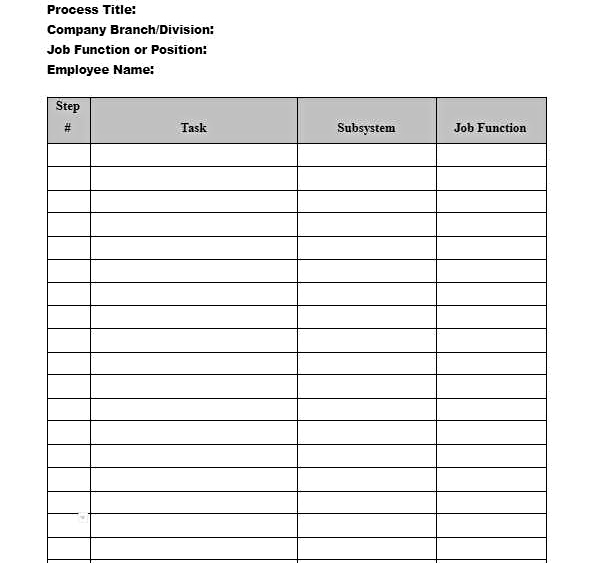
Step 2 – Time to draw it out
Now that you have identified the processes to be developed and created an outline using the Process Mapping Worksheet, the next step is to create the actual Process Map Diagram.
Follow these steps to create a map, define improvements, validate changes, and measure results.
- Draw a box to represent each task in the process.
- Fill in each box with the task to be performed.
- Include references to data that needs to be input.
- List additional resource material or forms to be filled out.
- Include standards for each task, if required.
- Connect the tasks with arrows to represent the order in which they are performed and completed.
- Create a report/method and frequency schedule to measure the results.
- Train the people involved with the process.
- Roll out the revised process.
- Observe the process to see if it is working as planned. Make any modifications.
After the Manager and employees sign off on Steps 6 and 9, the revised process becomes a company procedure.
Don’t worry about perfection at this point. The idea is to get it down on paper. I love using a whiteboard for my processes. Once I have them completed, I simply snap a photo with my phone and use that as a map to back to my computer and get it documented.
Honestly, it doesn’t have to be fancy. It is more important to have the process on a piece of paper that is roughed out than it is to wait for two weeks for the final process to come back for implementation.
Business Process Mapping Software
With the advent of more and more SAAS types of companies, process mapping tools have become easier to find and use. These are online tools which allow you to upload a document, such as an Excel spreadsheet or PowerPoint presentation, and then map out the processes contained within it by showing how they interrelate with one another.
Google Drawing
This is a Free option that you can use in a bind. I often use Google Draw as my whiteboard to get the ideas down. I can get approval first, then submit it to the company systems development team for finalization.
Here is a great video on how to use Google Draw
Lucidchart
This is my favorite paid option. It is super easy to use and makes quick work of any process map, including all of the examples above. One of the nicest features is the examples of existing types of process maps so you can decide what type even before you begin. You can get Lucidchart for less than $20 per month. Here is a quick overview.
Microsoft Visio
Visio is the Cadillac of process mapping software. It’s a little pricey and if you are mostly working in the Google Workplace (Google Sheets, Google Docs) it may not be the best option. However if you don’t like paying a monthly fee, getting one time is very appealing.
Outsource It
You can take your roughed out process and hand it off to a Freelancer to formalize it for you. They are very experienced, so they can interpret your (as long as they can read it!) rough drawing. They will submit a rough draft and you can make adjustments from there. I have done this successfully through Upwork and Freelancer. Usually 1-2 round of edits cover it!
Role of a process mapping consultant
Think about it…why haven’t you documented your processes yet? Many businesses simply don’t think they need it because they will just use it. That works in a business where there is a technician mindset, hands on Owner. However, if you are serious about growing your business, worried about the loss of key employees or have investors involved, systems development and process mapping will be a requirement.
What we find most is that most businesses benefit from the help of an expert consultant for getting the processes documented. Beyond the fact that the outsider can ask questions that maybe others haven’t ask, the reality is you are likely already short-handed and lost in the minutia of daily operations.
An outside consultant can manage the arduous task of mapping out workflows from start to finish, or take care of a specific process which has issues. Profit Pro has years of experience helping business owners document their systems and can work with your team while you go on with the business of the day…at least until we get to you!
Related Articles:



